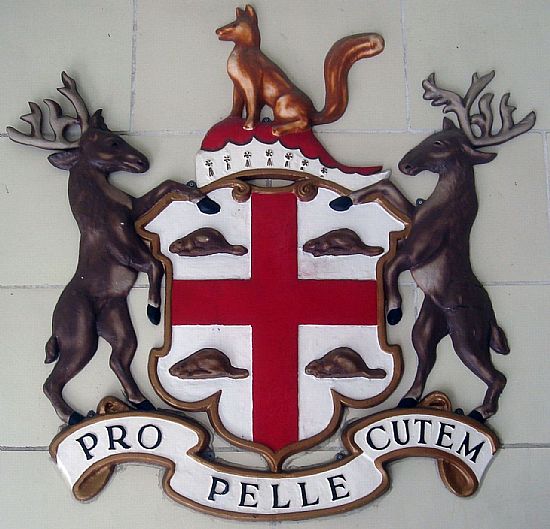Merchant Adventurers
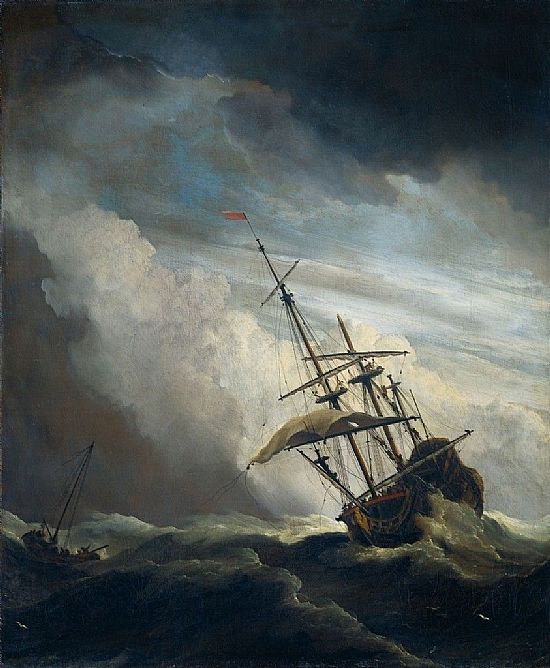
De Windstoot (The Squall): Willem van de Velde Younger (ca 1650-1707) courtesy of the Rijksmuseum Amsterdam
Salarino
Your mind is tossing on the ocean;
There, where your argosies with portly sail,
Like signiors and rich burghers on the flood,
Or, as it were, the pageants of the sea,
Do overpeer the petty traffickers,
That curtsy to them, do them reverence,
As they fly by them with their woven wings…
Antonio
Believe me, no: I thank my fortune for it,
My ventures are not in one bottom trusted,
Nor to one place; nor is my whole estate
Upon the fortune of this present year:
Therefore my merchandise makes me not sad.
Shakespeare: The Merchant Of Venice: Act 1
The dangers of overseas trading using borrowed capital involved enormous risks in the sixteenth century as Shakespeare’s The Merchant of Venice shows.
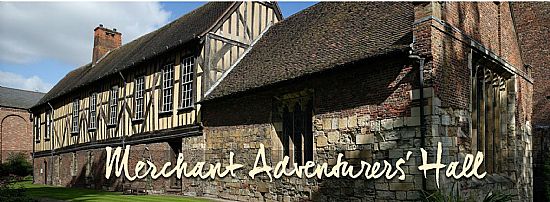
Photo: Visit York: Merchant Adventurers' Hall in York
The Tudor splendour of Merchant Adventurers' Hall in York is evidence of the value of merchant solidarity in spreading those risks.
The reconstructed hall of The North West Company’s trading post at Thunder Bay in Canada is another example of a display statement about the success of a shared trading enterprise. The history of the NWC is deeply rooted in this part of Scotland. It was later merged with the state-backed The Hudson's Bay Company.
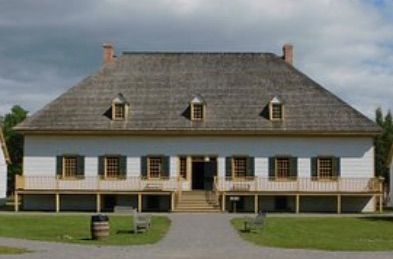
Photo: Chris Light 1982.
Merchant Guilds
The royal burghs facilitated the merchant guilds. These provided some protection. With their sense of Christian brotherhood in business, they were also charitable societies. Their first priority on that score was the needs of the families of their members in distress.
In Edinburgh concern for the orphaned children of merchants in residential “hospitals” has resulted in a whole raft of modern educational establishments.
The earliest "hospital" was founded by the king’s jeweller, often called “Jingling Geordie”, George Heriot. The palatial-looking building of his “Hospital” has the date 1628 on its foundation stone.
Mary Erskine School was the legacy of a remarkable early female Scottish entrepreneur. It was originally called the Merchant Maiden Hospital in 1694 at its foundation.
George Watson’s College with its gilded merchant ship sailing proudly in the wind above its roof followed in 1741. Neither of these two schools now occupy their original buildings. Watson’s and Heriot’s are both co-educational schools today.
Were there such merchant "hospitals" in this area founded out overseas trading profits? Fordyce Academy, once known as The Eton of the North, will certainly feature in the mini-biographies.
Some medical hospitals were certainly funded by individual benefactors who had made their fortunes overseas in the Victorian era. Leanchoil in Forres, The Stephen in Dufftown in particular concern this project.
Freemasonry
About the same time, the Masons' Guilds transmuted into Freemasonry.
The first Grand Lodges were formed in England in 1717. Nineteen years later, in 1736, Scotland had her own Grand Lodge even though, technically, both nations had united under the one Crown and one Parliament.
The secrecy which surrounded this brotherhood for so long makes its history difficult to disentangle from myths of its ancestry, conspiracy theories and insider-trading accusations.
Freemasons were certainly to be a major force, however, in the colonial and economic development in the modern world.
Chartered Companies of Merchants
The scale of exploration in the seventeenth century demanded great capital investment. This required properly organised and extended numbers in partmerships.
London had formed its first Company of Merchant Adventurers as a trading guild of merchants as early as 1407 but it was only chartered in 1606. “Adventure” here refers to financial rather than physical risk (cf "venture" capital today) though it obviously involved both kinds of risk.
Marketing Shares: The Stock Market Invented.
Since more and more capital was needed to fund the great explorative expeditions traders began to develop the notion of share-trading.
In Britain share-trading began to be partly regulated in 1698 by the opening of The London Stock Exchange. It became even more strictly regulated after the disaster of The South Sea Bubble collapse in 1720.
A proportion of a company’s stock or the value of its assets, “a share”, would be “floated” (water imagery proliferates in the financial world) at a set price. This price fluctuated according to the way the Company developed.
The trick to making money was (is) to buy at a time when the value of the shares was low and sell when they were high. It was a new form of gambling in a country that was already addicted to an evening's entertainment card-playing that created wealth for some and misery for others.
Bubbling Shares and Disassociation from Actual Stock
While the greatest of the Augustan satirist poets, Alexander Pope, made a fortune by selling his shares at the right moment the father of the great cartoonist, William Hogarth, was commited to The Fleet prison as a debtor.
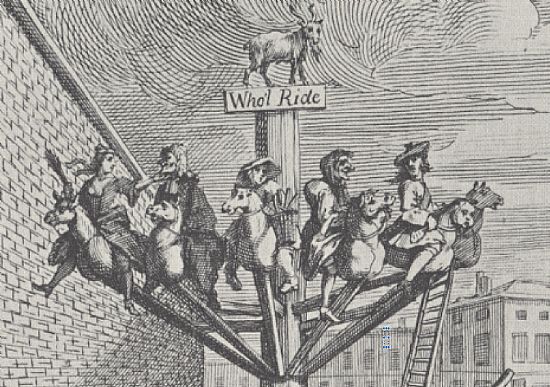
The result of that was one of Hogarth’s bitterest cartoons. In it he chose to place a Scottish laird on the share-trading merry-go-round. The laird is looking over his shoulder in some dismay at a whore enticing an enamoured reformed minister, a common woman bootblack who is in the middle and an ugly leering old hag who has climbed the ladder of “success” before him.
The whole cartoon (not shown here) was so revealing of the rampant human greed and belief in the accumulation of money for itself that had raced through society like a plague that Hogarth had difficulty selling his cartoon at first.
We have become so accustomed now to the notion of monetary capital as “real” wealth that we find it hard to realise what a change that was in society.
The Muscovy Company
The first English joint stock-trading company was "The Marchant Adventurers of England for the discovery of lands, territories, iles, dominions and seigniories unknowen, and not before that late adventure or enterprise by sea or navigation, commonly frequented". It had been founded in 1551 by Richard Chancellor, Sebastian Cabot and Sir Hugh Willoughby. It got its Royal Charter in 1555. It originally financed the search for an Eastern Arctic route to avoid the Portuguese around the Cape and in the Indian Ocean. Only Chancellor’s ship survived the journey. The two other ships were locked in the ice and their crews perished.
Chancellor reached the mouth of the Dvina river and was given an audience by Tsar Ivan IV who gave his blessing to the Company's free trade with Russia. The Company then became more commonly known as The Muscovy Company. Furs, tallow. wax, timber, tar and hemp were imported from Russia and cloth woven in Britain was the chief export. It continued to trade until 1917. Scots were involved as well as English but at present my early researches show that the majority of Scots who went to Russia were there in a military capacity. Managing agents in the principal trading depots in Russia were called factors and the depots became known as factories. The same system operated in the Canadian fur trade.
The Sea Route to Cathay.
Henry Hudson, an experienced navigator in the Arctic Seas was sent by the Muscovy Company to continue the search for a North West Sea Passage to Cathay. In 1609 he entered the enormous gulf that now bears his name where his mutinous crew abandoned him in 1611.
It was not until 1670 that a trading company, also named in his honour, was founded to exploit the riches of the country around the bay. The Hudson’s Bay Company was given its Royal Charter by Charles II on the 2nd May 1670 (just 350 years ago) at the instigation of two French traders, Pierre-Esprit Radisson and Medard de Chouart, Sieur de Grosseillier.
